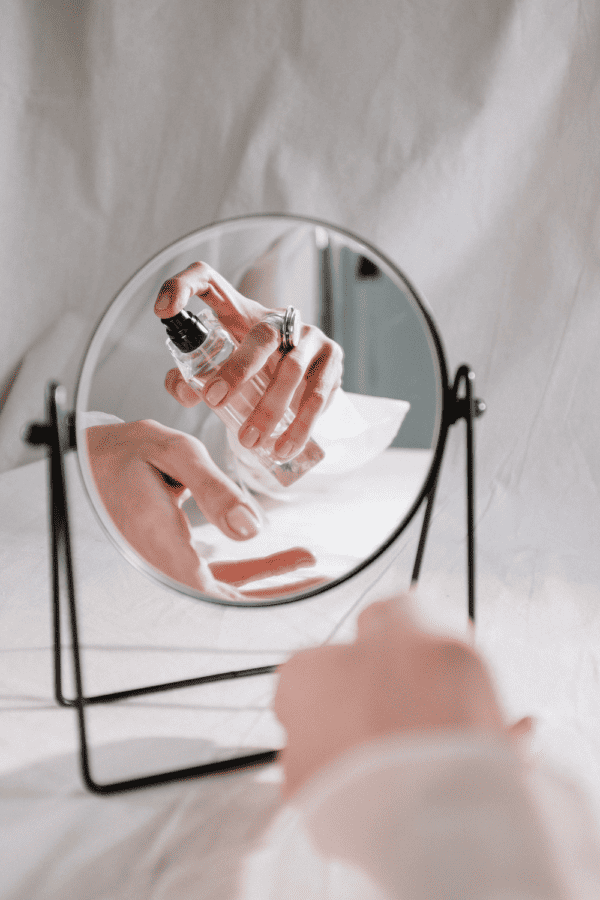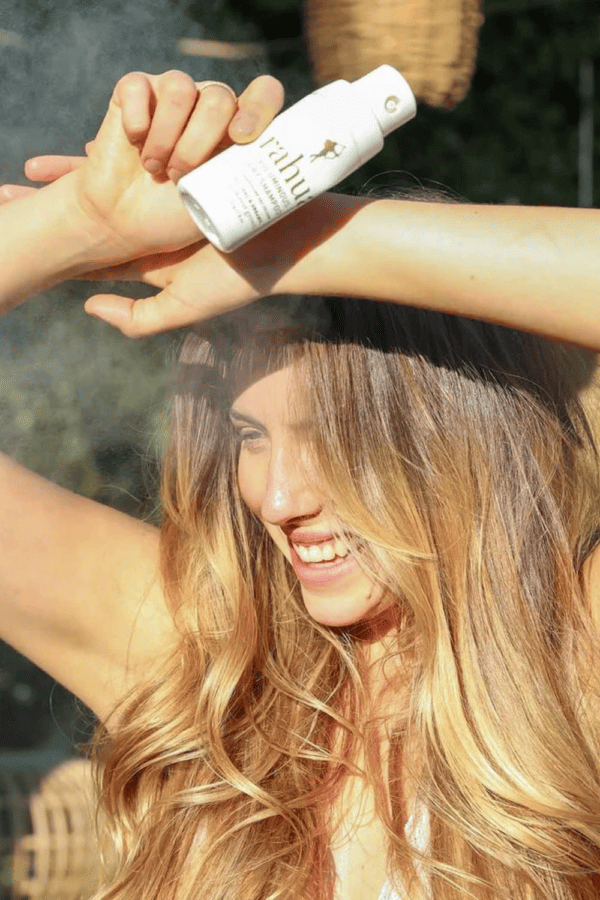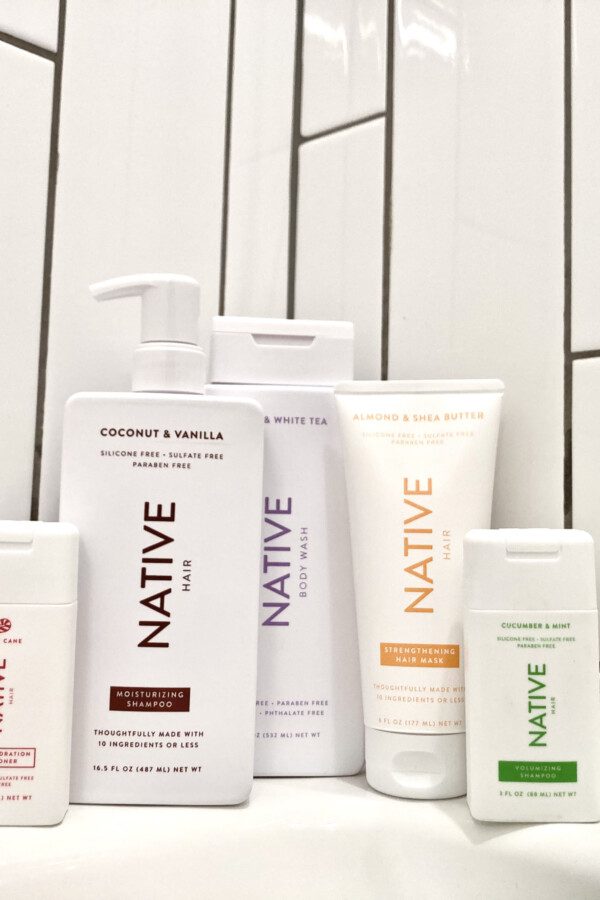I’m a Rihanna fan for a lot of reasons, so I wanted to find out if Fenty (her cosmetics and skincare brand) could be considered clean or non-toxic.
In this article, we’re taking a deep dive into Fenty’s transparency, ingredients, and ethical & sustainable initiatives so you can decide whether or not you want to use this brand as a part of your self-care routine.
In a Nutshell:
- Fenty Beauty and Fenty Skin have a couple of positive initiatives in place: they restrict the use of phthalates and parabens, and don’t do any animal testing.
- Fenty Skin (the skincare arm of the brand) has a much more comprehensive “No-No” ingredient list than Fenty Beauty (the makeup) does.
- Fenty’s products contain several types of ingredients that are concerning or questionable when it comes to safety, including things like talc and undisclosed fragrance.
- Fenty says its products are all 100% cruelty-free, but carries no third-party certifications. Some of the products are vegan and others aren’t.
Table of Contents
- In a Nutshell:
- What Does “Clean Beauty” Even Mean?
- Fenty Beauty vs. Fenty Skin
- Fenty Ingredients
- Is Fenty Cruelty-Free?
- Is Fenty Vegan?
- Other Ethical & Sustainable Considerations
- Decreased Packaging (Kinda)
- Give Back Initiatives
- Diversity & Inclusion
- Where is Fenty Beauty Manufactured?
- Who Owns Fenty?
- What About Savage x Fenty?
This article contains affiliate links, which means we may earn commission if you decide to make a purchase.
What Does “Clean Beauty” Even Mean?
In order to answer this question, we first have to clarify what one actually means by “clean.” Because “clean beauty” doesn’t really mean anything specific. There aren’t any regulations or specific standards that a brand has to meet in order to be called “clean.”
Some people use the word “clean” to refer to products that are free from animal products and/or animal testing.
Others use “clean” in reference to human-safe formulations: products that are free from things like phthalates, parabens, and talc are considered “clean.”
Then there are other sustainable and ethical elements to factor in as well: Is the supply chain transparent and are workers paid a living wage? Are the ingredients sourced in a sustainable way? Is the packaging low-waste?
What this usually means for the real world is that whether or not something is truly “clean” exists somewhere on a spectrum. Let’s look at the pros and cons of Fenty’s ingredients so you can decide for yourself.
Fenty Beauty vs. Fenty Skin
Rihanna’s Fenty brand has three main branches:
- Fenty Beauty (cosmetics)
- Fenty Skin (skincare and fragrance)
- Savage x Fenty (lingerie, activewear, and loungewear)
We’re going to look at the ingredients and materials used in all three sub-brands to find out if they’re non-toxic and sustainable.

Fenty Ingredients
Let’s start with the good news.
Fenty Skin does have a list of “No-No” ingredients that they do not use in any of their skincare products:
- Parabens
- Mineral oil
- Oxybenzone
- Octinoxate
- Phthalates
- Formaldehydes
- Plastic microbeads
- Thiazolinones
- PTFE/PFAS
- Polyacrylamide
- Paraffins
- Lead
- Ethanolamines (MEA, DEA, TEA)
- Sodium Lauryl Sulfate
- Sodium Laureth Sulfate
That’s a pretty good list!
But the main problem here is that this list applies only to Fenty Skin products and not to the cosmetics. The only two types of ingredients that are also restricted from the Fenty Beauty products are phthalates and parabens.
Other than that, the makeup arm of the brand does not have a similar list of “No-No” ingredients, which means Fenty Beauty products could theoretically still contain many of the ingredients listed above. (We reached out to Fenty’s customer service to confirm this.)
This is not a good sign, especially considering that makeup products are more likely to sit on your skin for hours and hours, day after day.
Now, let’s talk about the concerning ingredients in Fenty Beauty and Fenty Skin products…
Talc
A lot of Fenty Beauty’s powder ingredients list talc as one of the first ingredients. Talc is problematic because it’s often contaminated with asbestos, a known carcinogen.
On their FAQ page, Fenty states: “The talc we use is the highest quality and tested to confirm the absence of asbestos fibers – it meets strict purity criteria and all measures of quality and safety and it strictly complies with all the legal regulations where we operate.”
This is kind of good news, but the big problem here is that there aren’t actually any regulations on the use or testing of talc in cosmetics in the U.S. So to say it “complies with all the legal regulations” doesn’t really mean as much as it sounds like it does.
Additionally, Fenty customers would benefit from more transparent information about their testing. (Who tests it and how often? Do they test every single batch?)
We reached out to Fenty to ask for more information about their talc testing, but so far haven’t heard back. We’ll update this article if and when we receive a reply about this specific issue.
Undisclosed Fragrance
In what’s known as the “fragrance loophole,” brands are legally allowed to include ~4,000 different chemicals in a product and just list them under the word “fragrance” or “parfum.” Some of these ~4,000 chemicals are safe, while others are carcinogenic (like BHA), endocrine disrupting (like diethyl phthalate), and irritating (like ethylbenzene).
This is why truly “clean” beauty brands either:
a) Don’t use fragrance at all, and/or
b) Transparently list all of their fragrance ingredients on their products and/or website
Unfortunately, many of Fenty’s products contain “fragrance” or “parfum” on the ingredient labels, and they do not disclose what ingredients are actually in those fragrances.
On their FAQ page, they state that “any synthetic fragrance we use is less than 1 percent of the total formula.” But again, that doesn’t really mean all that much for people who want or need to avoid these chemicals as much as possible.
Quats
Despite the fact that it’s advertised as “clean” on the product page, Fenty Skin’s Makeup Removing Cleans’r contains polyquaternium-7, which is an irritant and formaldehyde-releaser. This is concerning because “Formaldehydes” is listed on their “No-No” list.

What About These Other Iffy Ingredients?
Fenty’s products contain some other kinds of ingredients that some consumers may want to be aware of as well, such as:
Titanium Dioxide: This is a controversial one. Titanium dioxide is widely used in cosmetics, even in some of the safer brands. Whether or not titanium dioxide is potentially problematic seems to depend on how it’s used and how large the particles are. Due to the fact that titanium dioxide can be inhaled from cosmetic powders and contribute to health concerns like cancer, some consumers may choose to avoid it when possible.
Phenoxyethanol: This is a preservative ingredient found in both Fenty Beauty and Fenty Skin products. This is mostly a concern for infants, so Fenty’s products shouldn’t be used on little ones. Adults who struggle with eczema or sensitive skin may also want to be wary of phenoxyethanol. Other than that, it’s not a huge chemical of concern for the general population.
Dimethicone: This is in a lot of Fenty’s products. It’s also used by other safer cosmetics brands such as Beautycounter (although more sparingly), while other non-toxic beauty brands choose to leave it out of their formulations. The main concern is that dimethicone can contain residual amounts of siloxanes such as D4 and D5, which are endocrine disruptors.
Ingredients with use restrictions: There are also a lot of chemicals on Fenty’s ingredient lists that have use restrictions, which means the ingredient has to be contained to a certain amount according to regulations (usually within the US, Canada, and/or the EU). This includes things like benzyl salicylate (linked to endocrine disruption and beast cancer) and cocamidopropyl betaine (which can cause contact dermatitis). This is something to be mindful of if you frequently use a lot of cosmetics. Even though one specific product may be within the limits, you may end up exceeding those limits when you stack multiple products onto your skin.
Ingredients without research or safety data: There are a lot of ingredients in Fenty’s beauty products that just haven’t been researched for safety yet. Of course, this is not automatically a bad thing (and it’s very common), but it’s something conscious consumers may want to be aware of. Remember that because of the way the U.S. Toxic Substances Control Act (TSCA) is set up, most chemicals aren’t actually tested before they hit shelves.

Is Fenty Cruelty-Free?
Fenty states that both Fenty Beauty and Fenty Skin are 100% cruelty-free. That means they “never test products or ingredients on animals, nor do we allow suppliers to conduct testing on our behalf.”
It’s worth noting, however, that Fenty does not come with any third-party cruelty-free certifications (such as Leaping Bunny).
Is Fenty Vegan?
Fenty Beauty is not vegan. Some of their products contain certain animal-derived products such as beeswax and carmine.
Fenty Skin is considered vegan since they do not use any animal-derived products in their skincare formulations. However, they are not third-party verified to be vegan.
Other Ethical & Sustainable Considerations
Decreased Packaging (Kinda)
Fenty Skin has a couple of semi-sustainable initiatives in place, including the elimination of excess packaging (some products are shipped without boxes), refillable options, and the use of recycled plastic.
Fenty Beauty, however, does not appear to have any sustainability initiatives at this time.
Give Back Initiatives
A portion of some Fenty products go to the Clara Lionel Foundation, which is Rihanna’s non-profit that “invests in climate justice initiatives in the Caribbean and United States and helps communities prepare for and withstand natural disasters.”
Diversity & Inclusion
Fenty is a woman- and Black-owned brand that offers a wide range of makeup shades, including “traditionally hard-to-match skin tones.”
Considering that Black women and people of color tend to be exposed to more toxic ingredients in cosmetics and personal care products, it’s important that the makeup industry not only offers products that can actually match darker skin tones, but are also safe. Here are several great resources available to help consumers find safer Black- and minority-owned makeup and skincare brands:
- Campaign for Safe Cosmetics Non-Toxic Black Beauty Project and Database
- BLK+GRN Marketplace (you can use the code THEFILTERY10 for 10% off)
- BIPOC-owned brands on Credo Beauty
- Black-owned brands on The Detox Market
- EWG-Verified and Black-Owned by Environmental Working Group
Where is Fenty Beauty Manufactured?
Unfortunately, Fenty is not transparent about where their products are made. Their website does not have information about their manufacturing practices or supply chains, so we reached out to ask. They responded with: “Each product will have where they are manufactured. Not all our products are manufactured in the same place.” However, we were not able to find manufacturing information on the individual product pages, either.
Who Owns Fenty?
Even though Rihanna is a Co-Owner and Founder of Fenty, it is also co-owned by LVMH, a France-based conglomerate that also owns brands like Tiffany & Co., Christian Dior, Marc Jacobs, Sephora, and many more.
What About Savage x Fenty?
Savage x Fenty is a line of lingerie and clothing. Unfortunately, there doesn’t seem to be anything sustainable about the brand overall. They primarily use polyester and conventional cotton and they don’t have any information about ways they reduce impact on people or the environment. Good On You rates Savage x Fenty as “Avoid.”
Here are some guides for alternative brands making eco-conscious underwear, activewear, and loungewear out of organic fabrics and non-toxic dyes:
- Organic bras
- And organic women’s underwear and boxers
- Organic, non-toxic, and low-plastic activewear
- Organic sweats and pajamas
If there are any other brands you’d like us to do a deep dive into, let us know. And to get more info, tips, & tricks about how to decrease the toxins in your life delivered to your inbox once a week, sign up for Filtered Fridays.
Image Credits: Victor Candiani, Jazmin Quaynor, Valentina Eganovic, Devon Vereen




